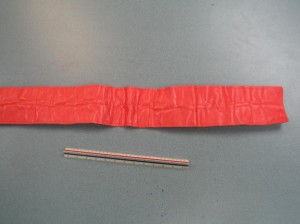Fact Checked
[/sg_popup]In case of any sports injury, it is important that you follow the treatment advice given by your health care provider. Severe injuries and chronic injuries may require diagnosis and medical treatment.
Treatment
For swelling due to injury, follow RICE:
Rest. Ice. Compress. Elevate.
1. Rest
- Do not use the injured area and allow it to rest
- Continued physical activity may cause further harm to the injured spot and thus delay the healing process. Additionally, it may exacerbate symptoms such as pain and bleeding
Splints, commonly found in first aid kits, are used to help immobilize many sports injuries. - You may use crutches in case you have injured you ankle, knee, leg or foot–this will prevent you from bearing any weight on the affected region
- In case of an arm, wrist, elbow or hand injury–splint the injury, if possible
2. Ice
- Applying ice on the affected region may reduce healing time and pain
- Icing the area may also stop bleeding by allowing the blood vessels to contract
- Wrap the ice or ice pack with a damp cloth before applying pressure on the wound or swelling. Replace the cloth if it has soaked too much blood
- Continue applying ice for 15-20 minutes for 48 hours. Avoid applying ice for more than 20 minutes
- Apply ice for as long as symptoms persist
3. Compress
- This will reduce healing time by reducing the swelling around the affected region
- You my use an elastic bandage or a clean cloth to wrap the affected region
- Wrap lightly and not too tightly as wrapping the injury too tighly may cause more swelling
- Loosen the bandage if it causes any discomfort because of it being too tight
4. Elevate
- Elevate the injured area above heart level, if practical. This will encourage blood flow and thus reduce pain and swelling
- Prop the affected arm or leg with soft objects such as pillows
Medication
- Doctors may recommend taking non-steroid and anti-inflammatory drugs. These include ibuprofen, acetaminophen and aspirin
- Avoid giving aspirin to young children and teenagers under 18 years of age as it is linked to a lethal disease called Reye’s syndrome.
- Consult your doctor
Heat treatment
- Heat treatment may cause delay in healing if applied too quickly after the injury
- Wait for at least 3 days before you begin heating treatment
- Wait until the swelling disappears
- Some doctors may recommend alternating cold treatments and heat treatments
Controlling inflammation will:
- Reduce healing time
- Reduce the chances of scar tissues forming and thus reduce the risk of re-injury
Recovery
- Recovery may be prolonged depending on the activity the casualty performs. For quick recovery, it is important that the casualty gets plenty of rest and stop sports activities till the injury heals
- Proper care needs to be provided for quick relief.
- In case this is a first time injury, severe complications may occur, therefore, see your doctor for necessary treatment
Where to Learn More
To learn more about managing and recognizing common sport injuries such as sprains and strains enrol in the following workplace approved programs
- Standard First Aid and CPR – more information and registration.
- Standard Childcare First Aid and CPR – more information and registration.

